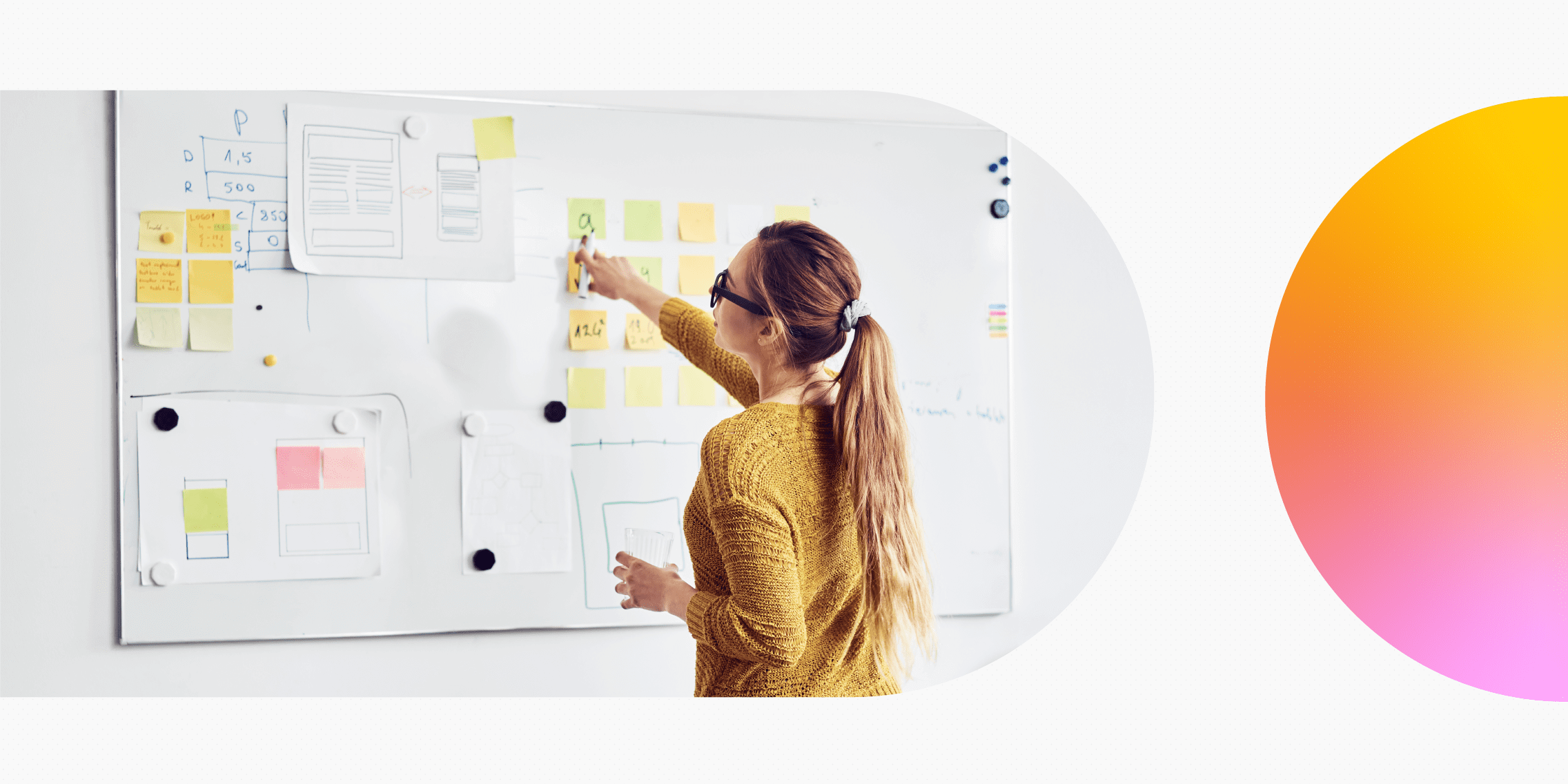For any UX designer, the handoff to a developer is the final and crucial step of a project. When a handoff is done correctly, it saves time and effort for both the developer and the designer, as well as improving the quality of the end product and the happiness of the user.
The handoff documents bridge the gap between design and development and while it may sound like an overwhelming process, it doesn’t have to be. To create a seamless design handoff for a developer, we share some important tips that UX designers should follow.
What is a design handoff?
When UX designers are fully satisfied with their designs, they create a document that has all the details and digital assets required for the development team to bring the product to life. This is the design handoff process.
The first step to any smooth design handoff is a strong designer-developer relationship.
Building a strong designer-developer relationship
It is essential to have a good working relationship with your developer. It will ensure that you can:
- rely on one another for honest feedback
- find a common ground that works for both of you
- respect each other’s expertise and not overstep into each other’s domain.
Communicate and collaborate
For any good working relationship, communication and collaboration are key – it is also important for a successful design handoff. Developers should be brought in early in the design process. Their expertise and feedback should be valued while creating prototypes and designing the user interface. It is important to keep an open dialogue so that you can discuss what worked well in earlier projects and what didn’t.
Good communication will help:
- create a more refined design handoff
- provide the developers with background knowledge and context
- avoid issues after the design handoff
Developers are the people who make designs a reality. The sooner they are brought into the design conversation, the sooner the end product can be perfected.
Avoid jargon
You don’t want to confuse the developer by using terms that are specific to your role or your design team. Communicate in a language that is simple and easy to understand. It is important to find a middle ground and be on the same page throughout the process.
It is very possible that your development team is not aware of terms such as empathy map, mental model, microcopy etc.
Be as universal and specific as possible to ensure everything you need to share is clearly understood. This will save a lot of time as it cuts back on unnecessary back and forth.
Be aware of each other’s expertise
While you are not expected to be able to code, you should possess an understanding of the programming language that developers use and the challenges that they may face in their role. Knowing the basics of vital front end skills, such as CSS, Javascript and HTML, will make you a much better collaborator and will ultimately improve the quality of your product.
If you are aware of the programming language as a designer, you will be able to assess which designs can be implemented by a developer. From this, they can create designs accurately.
You should be aware of the complexities of each other’s roles and respect the time that is required to move a project from the design stage into the development stage.
A developer’s role is not an easy task. It requires continuous and long hours of writing and rewriting lines of codes, which at times may not yield the same results as you expected.
Preparing for handoff
It is now time for you to share with your developer the digital assets necessary for them to get down to business. Some tips to make the handoff process easier for you include:
- Create templates: As a designer, you will be met with tasks you do quite often, so it makes sense to create a template for each task and each deliverable documented in the handoff. This template will fit your aesthetics and workflow so that whenever you need to create a handoff, the templates are already there. This will save you a lot of time.
- Hold handoff meetings: Prior to sharing your deliverables, have a design and developer team meeting and walk them through each deliverable you intend to share during handoff. Show them what they are expected to receive and where they can find each of the assets. Answer any potential questions that may arise and provide as much clarity as you can during this meeting. In this meeting, you may also demonstrate how to use design software, like Figma or Zeplin, as your developers may not be so familiar with them. Since most of your assets will be shared with them on these platforms, it’s important to check that they know how to use them.
- Annotate and explain: You will be sharing a lot of designs and digital assets with your developer, which may overwhelm them. It is a good practice to annotate and leave comments on each design, explaining each decision you made. These annotations detail the functionality and the behaviour of how the product should work. Their job is to define how the system behaves, how it responds to actions taken by the user, how it communicates results and how it helps fulfil intentions.
- Avoid clutter: Make sure all your designs are presented neatly, as it can be frustrating for anyone looking at it for the first time. Organise and label everything clearly so that going back and forth is easy. You should also provide the developers with editable access to all documents beforehand.
- Review your work: Before you hand over your deliverables, review everything. Ensure that all the links are accessible and working. Make sure that there are no typos and that the correct imagery is used for each section.
Now that each of your tasks and designs are agreed upon, we will give you some pointers on how to create a smooth transition from design to development.
This includes (but is not limited to):
- User Flows
- Prototypes
- Animations
- Design Handoff Checklist
User Flows
User flow diagrams are created before any sketches and they define where content lives and the impact it will have on the user. They help developers understand where a screen sits in the structure of a design and the sequence of the main flows.
These are more important for products with complex designs and multiple logic possibilities for example edge cases.
User flow examples include:
- Text flows: Simple explanations written in something like an Excel sheet can guide the developer through each interaction without the use of any supporting images or screens.
- Chart flows: This is a slightly more complex user flow diagram, but it is a visual presentation. LucidCharts are a great asset for creating such flows.
- Screen/Wire flows: If you would like to take your user flow a step further, create flowcharts using high or low-fidelity wireframes. This will help the designer visualise each interaction more accurately.
Comprehensive prototypes
Prototyping is possibly one of the most important digital assets within your design handoff checklist. It allows the whole team to visualise each interaction, identify common goals and – most importantly – understand what the final product or solution should look like. A comprehensive prototype will make your developer’s life easier. If you use tools like Figma, prototyping should be an easy task for you.
Archive any designs and screens that you don’t want in your final product. If these are clearly marked in the handoff, it will provide clarity and prevent your developer from facing any confusion.
Animations
Occasionally, UX designers include animations during interactions on an app to make the final product look more appealing and fun to use. However, at times it may be difficult to explain to the developer what the animation should look like. One ideal way to achieve this is to create gifs of the animations and share them with your developer. This allows the developer to visualise and program the animations with ease.
You can also create these animations on Figma, record and save them as videos and share them further with your team.
Design handoff checklist
Finally, create a simple and easy-to-use checklist, highlighting the features that need to be designed based on priority and their statuses. This will prevent any designs from being overlooked, no matter how thorough you are.
A simple checklist will allow you to:
- Communicate with your developer
- Track progress of each feature
- Provide any blockers that are hindering the progress of any feature
Conclusion
Once you hand your designs over to your developer, your work doesn’t end there. Keep the lines of communication open so that you can track progress and provide any support to ensure that the end product is the best that it can be.
As the developers get started on your designs, actively engage in Quality Assurance (QA) sessions to ensure the designs are being implemented as planned and the product is what you as a team envisioned.
When you put time and effort into your first design handoff, every handoff from that point on will benefit from it. You will set a high standard for the design team, the development team and the overall quality of the product itself. By establishing clear lines of communication, both teams will be confident in the fact that if any problems arise, they can be solved easily.




